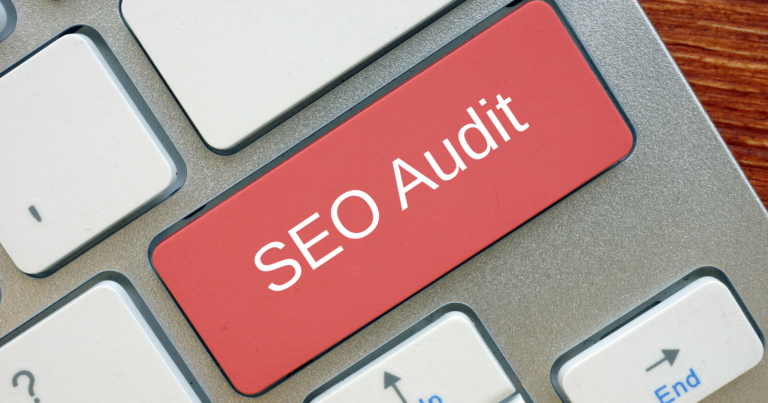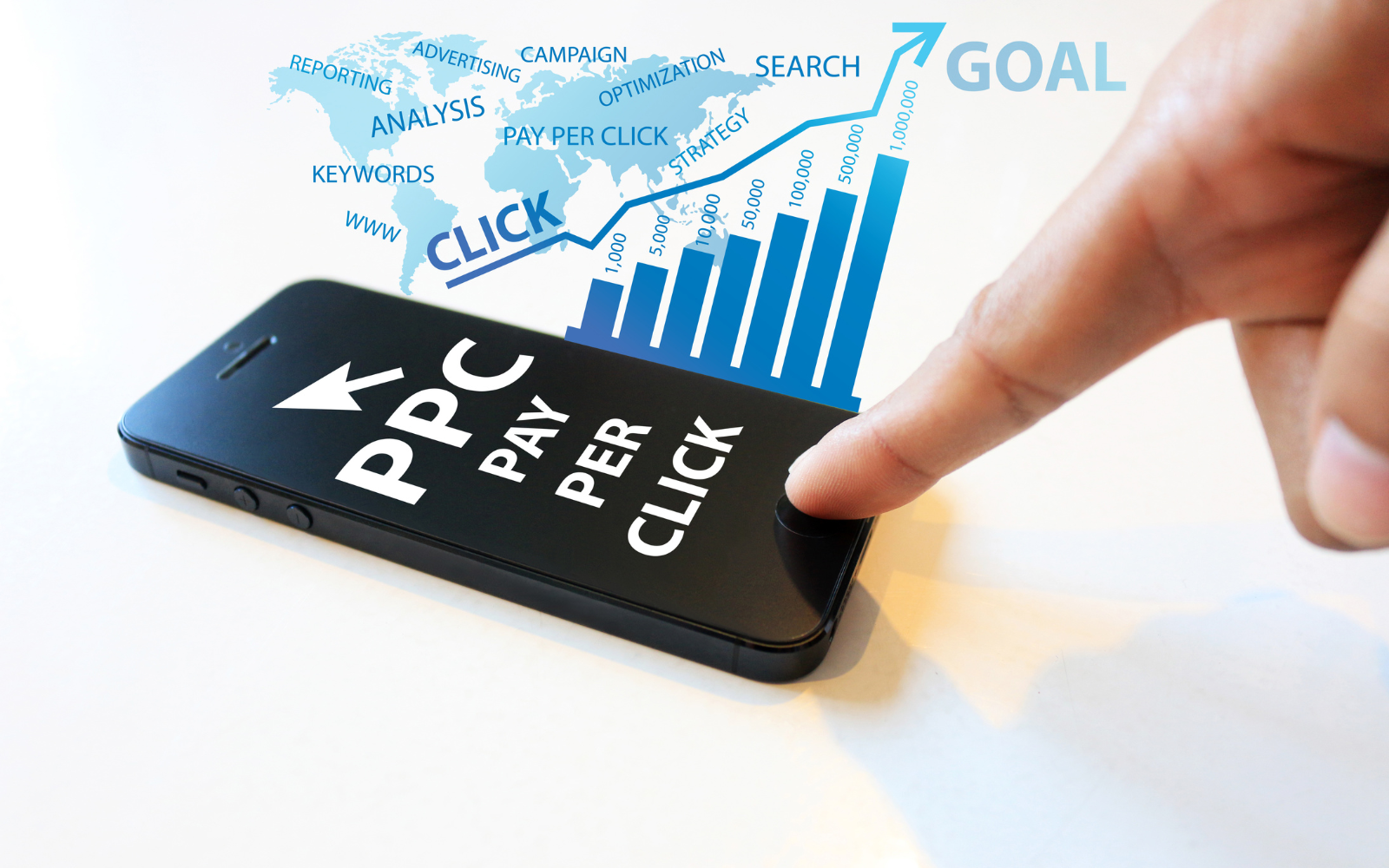SEO
24-Point Enterprise SEO Audit For Large Sites & Organizations

If your website is struggling to rank in search engine results pages, an enterprise SEO audit can help you identify why.
For any SEO provider or in-house marketer who wants to audit an enterprise website, these 24 items should be on your checklist before moving forward with any SEO campaign.
What Is An Enterprise SEO Audit?
An SEO audit is an evaluation of a website to identify issues preventing it from ranking in search engine results.
Enterprise SEO audits are focused primarily on large, enterprise websites, meaning those with hundreds to thousands of landing pages.
Why Perform An SEO Audit?
Auditing your website is the first step in developing a successful SEO strategy.
Why?
Understanding the strengths and weaknesses of a website can help you tailor your SEO campaigns accordingly.
Performing an audit also helps your team direct your time, resources, and budget to the optimizations that will have the greatest impact.
What To Include In Your Enterprise SEO Audit
Auditing a large website can be very demanding, with over 200+ ranking factors in Google’s algorithm.
So to run a more sufficient audit, separate your audit into five parts: content, backlinks, technical SEO, page experience, and industry-specific standards.
You will need to rely on SEO software tools to run your audit successfully.
SEO platforms like SearchAtlas, Ahrefs, Screaming Frog, and others are a must for auditing any large website.
Content
Are You Targeting The Right Keywords?
The foundation of all successful SEO is strategic keyword targeting.
Not only do your target keywords need to be relevant to your products and services, but they also need to be realistic goals for your website.
So before you analyze whether your enterprise website is properly optimized, make sure your keyword goals are indeed reachable.
It’s possible that your target keywords are too competitive, or that you’re not targeting keywords with high enough search volume or conversion potential.
You can utilize a keyword tracking tool to see what search terms your enterprise website is already ranking for and earning organic traffic from.

Then, perform any necessary keyword research to find keywords that may be a better fit for your website.
Once you’ve ensured that improper keyword targeting is not the source of your poor SEO performance, you can move on through the remainder of your audit.
2. Do You Have SEO-Friendly URLs?
The URLs of your enterprise web pages should be unique, descriptive, short, and keyword-rich.
 Screenshot from Google, May 2022
Screenshot from Google, May 2022
URLs are visible at the top of search results and can influence whether or not a user clicks through to the page.
Use hyphens between words to keep the URL paths readable and omit any unnecessary numbers.
3. Are Your Meta Tags Properly Optimized?
Google crawlers look to the title tags and meta descriptions to understand what your web content is about and its relevance to specific keywords.
Like URLs, these tags are also visible in the SERPs and influence whether or not a searcher clicks.
Your audit should include checking that your web page’s meta tags are unique and following SEO best practices.
Use a site auditor tool to identify the web pages to address to speed up the process.
 Screenshot of SearchAtlas, May 2022
Screenshot of SearchAtlas, May 2022
Make sure to check for:
- Original and unique titles and meta descriptions for each web page.
- Proper character length: 50-60 for title tags and 150-160 for meta descriptions.
- Keyword or variation of target keyword including in both title and meta descriptions.
Google sometimes rewrites page titles and meta descriptions, but this only happens a small portion of the time.
Optimizing these meta tags is still an essential step in on-page SEO.
4. Is Your Content High-Quality And In-Depth?
Although content length is not a ranking factor, in-depth content often displays characteristics that Google likes, such as original insight, reporting, in-depth analysis, and comprehensive exploration of the topic.
There is no magic number when it comes to content length. Google’s Quality Rater Guidelines state that web pages should have a “satisfying” amount of content.
They also state:
“The amount of content necessary for the page to be satisfying depends on the topic and purpose of the page. A high quality page on a broad topic with a lot of available information will have more content than a high quality page on a narrower topic.”
Still not sure whether your content is long enough?
Look to your enterprise competitors who are already ranking and measure how long their content is compared to yours.
 Screenshot of SearchAtlas, May 2022
Screenshot of SearchAtlas, May 2022
Then, aim to have content equal to or more in-depth than theirs.
5. Are Your Landing Pages Internally Linking To Each Other?
Internal links help Google find and index your pages. They also communicate website hierarchy, relevance signals, topical breadth, and spread around your PageRank.
Make sure you evaluate whether or not your pages are leveraging an internal linking strategy. Also, take a close look at the anchor text used to link to other pages of your website.
 Screenshot of SearchAtlas, May 2022
Screenshot of SearchAtlas, May 2022
Your pages need to have internal links pointing to other pages, and be sure internal links are pointing to that page.
Otherwise, you will have orphan pages, meaning pages that Google cannot find and index because there is no linking pathway to them.
6. Does Your Content Show Expert Sourcing With External Links To Relevant Content?
Google also looks to external links to understand website content and the authority of websites.
External links should be only to relevant, authoritative sources, and your website links out to sites with higher Domain Authority scores than your own.
Otherwise, Google is less likely to trust your enterprise website if you appear to be keeping low-quality websites in your link neighborhood.
7. Are You Using Rich Media And Interactive Elements?
Google likes to see images, videos, and interactive elements like jump links on the page. These elements make content more engaging and easier to navigate.
However, if these elements slow down your page load times, they are counterproductive to your SEO efforts. That will be addressed in a later part of your audit.
8. Do Your Images Include Keyword-rich Alt Text?
Enterprise websites – particularly ecommerce sites – may feature thousands of images.
But because Google cannot see images, they rely on alt text to understand how those images relate to your web page content.
Your audit should include confirming that image alt text is not only present but descriptive and keyword-rich.
9. Are Your Pages Suffering From Keyword Cannibalization?
With hundreds to thousands of landing pages, there may be times when your landing pages are not only competing against your competitors but other landing pages on your website.
This is called keyword cannibalization and it happens when Google crawlers aren’t sure which page on your enterprise site is the most relevant.
Some tips for resolving keyword cannibalization:
- Find another keyword and re-optimize one of the competing pages.
- Consolidate the competing pages into one longer, in-depth page.
- Use a 301 redirect to point to the higher-performing or higher-converting page.
Backlinks
10. Do You Have Fewer Backlinks Than Your Competitors?
Google’s #1 ranking factor still remains the same: Backlinks.
If your enterprise website is competing against well-known incumbents in your industry, it’s likely they have a robust backlink profile, making it difficult for your website to compete in the SERPs.
 Screenshot from Ahrefs, May 2022
Screenshot from Ahrefs, May 2022
You can use a backlink tool like Ahrefs to identify your competitor’s total backlinks and unique referring domains.
 Screenshot from Ahrefs, May 2022
Screenshot from Ahrefs, May 2022
If there is a significant gap in backlinks or referring domains, this is likely a source for fewer keyword rankings or lower-ranking positions.
Dedicate a significant portion of your SEO campaign to link building and digital PR if you want to outrank your competition.
11. Does Your Website Have Toxic Backlinks?
Although backlinks are important for improving site authority, the wrong type of backlinks can also harm a website.
If your website has toxic backlinks from spammy, low-quality websites, Google may suspect your enterprise website to be guilty of backlink manipulation.
Google has gotten better at recognizing low-quality links, and after their 2021 Link Spam Update, Google also claims to nullify spammy links and not count them against websites.
However, there may still be moments when toxic backlinks should be disavowed.
You will want to focus on identifying where those toxic links are coming from and take the necessary steps to create and submit a disavow file.
Some SEO software tools can identify toxic links and create disavow text for you.
 Screenshot of SearchAtlas, May 2022
Screenshot of SearchAtlas, May 2022
Disavowing the wrong way can actually harm your SEO performance, so if you are unfamiliar with this Google tool, make sure you seek the assistance of an SEO provider.
12. Is Your Anchor Text Distribution Diverse?
Google also looks to the anchor text of your backlinks to understand relevance and authority. Relevant anchor text is important, but not all webmasters will link to your pages in the same way.
If the majority of your anchor text is branded, that’s okay.
Look for too much exact-match anchor text or high CPC anchor text that Google crawlers may flag for suspected backlink manipulation.
 Screenshot of SearchAtlas, May 2022
Screenshot of SearchAtlas, May 2022
If your anchor text does not display a healthy level of diversity, design a link building campaign around earning links with anchor text that improves diversity and signals healthy backlink practices to Google.
Technical SEO
13. Have You Submitted An XML Sitemap And Did it Include The Right Pages?
Because enterprise websites have thousands of landing pages, one of the most common issues uncovered in enterprise SEO audits is related to search engine indexing.
That’s why generating and submitting an XML sitemap is important. It communicates your website hierarchy to search engine crawlers.
It also tells them which pages of your website are the most important to crawl regularly and index.
If your enterprise website adds new product pages or content to your website, you can also use your sitemap to show Google the new pages rather than wait for crawlers to discover them through internal links.
 Screenshot of Yoast SEO, May 2022
Screenshot of Yoast SEO, May 2022
14. Have You Maxed Out Your Crawl Budget?
Google’s web crawlers will only spend so much time crawling your web pages, meaning your enterprise website may have pages that don’t end up in Google’s index.
Although improving your page speed and your site authority can lead to Google increasing your crawl budget, that takes time. So in the meantime, focus on making sure you’re using your crawl budget wisely.
If your audit uncovers essential pages that are not being indexed, your enterprise website may benefit from crawl budget optimization. You want your highest value, highest converting pages to end up in Google’s index.
15. Is Your Schema Markup Properly Setup?
A very powerful optimization that your enterprise website can utilize is schema markup.
If your enterprise website already includes schema on some of your pages, you will want to confirm that your schema is validated and eligible for rich results.
 Screenshot of Google, May 2022
Screenshot of Google, May 2022
You can use Google’s rich result to test your pages that include schema markup to confirm they are properly validated but to be even more efficient, use your favorite site crawler to test all of your pages at once.
16. Do You Have Excessive Broken Links Or Redirects?
Over time, links naturally break as websites update their content or delete old pages.
It’s important to check your enterprise website to confirm your external and internal links are pointing to live pages.
Otherwise, it will appear to Google that your website is not well-maintained, and Google will be less likely to promote your web pages in the SERPs.
17. Do Similar Pages Include Canonical Tags?
Enterprise websites (particularly ecommerce sites) may have duplicate content that targets different regions or is programmatically built out.
If those pages don’t have canonical tags, they will look to Google as duplicate content.
It’s important to confirm that the best, most in-depth version of the page has a self-referential canonical tag. All of the similar pages include canonical tags that identify the master version of the page.
 Screenshot from SearchAtlas, May 2022
Screenshot from SearchAtlas, May 2022
A site auditor tool like SearchAtlas can confirm whether your canonical URLs are properly implemented and if Google crawlers understand which page to promote in the SERPs.
18. Does Your Multilingual Content Leverage Hreflang Tags?
For multilingual enterprise websites, hreflang tags can help you show the right language content to the right searchers.
This improves your relevance signals and can have a huge impact on your conversion rates.
However, it’s easy to make mistakes when implementing hreflang and canonical tags.
As a general rule, only add hreflang tags to your web pages with self-referencing canonicals – not duplicate copies of the page.
Page Experience
19. Do Your Pages Meet Google’s Core Web Vitals Standards?
If your pages do not meet Google’s Core Web Vitals standards, they are unlikely to rank.
Google knows that load times, responsiveness, and visual stability impact the quality of a user’s experience, and thus the quality of a web page and whether or not it’s rank-worthy.
 Screenshot of SearchAtlas, May 2022
Screenshot of SearchAtlas, May 2022
You can see your Core Web Vitals metrics in your Google Search Console account.
You can also use the free platform to validate any fixes and see whether or not they improve your CWV metrics.
 Screenshot of Google Search Console, May 2022
Screenshot of Google Search Console, May 2022
20. Do Your Web Pages Include HTTP Or HTTPS Protocols?
A secure website is also essential to the quality of the user’s experience.
If your web pages are not utilizing HTTPS protocols, you are not providing users with a secure browsing experience.
As a result, Google is less likely to promote your pages.
 Screenshot of SearchAtlas, May 2022
Screenshot of SearchAtlas, May 2022
21. Are Your Mobile Pages Responsive And High-Performing?
The majority of searches now happen on mobile devices.
Also, with mobile-first indexing, Google predominantly uses mobile pages in its index.
It is also more likely to use your mobile pages when determining where to rank your pages compared to your competitors.
Some common mobile mistakes that occur include:
- Unresponsive design.
- Intrusive pop-ups.
- Bad UI/UX elements like button size.
- Unplayable or missing content.
Industry
22. Are You Considered A Your-Money-Your-Life (YMYL) Website?
If your enterprise website is considered a health, financial, legal, or other YMYL website, Google has extremely high standards for the content that it will promote to searchers.
Although this does not impact all enterprise websites, it’s important to know whether your website falls under this banner to make sure you meet Google’s specific standards for your YMYL industry.
23. Does Your Website Show High Levels of E-A-T?
Google wants to see that your content is relevant to users’ keywords.
It also wants to see that your website, as a whole, displays industry expertise.
E-A-T stands for expertise, authority, and trust. It’s hard to quantify, but some more tangible factors include:
- In-depth, well-researched content (e.g. blogs, ebooks, long-form articles).
- Expert authorship and sourcing (e.g. an author byline that shows industry-specific expertise and credentials).
- A clear purpose and focus for each page.
- Off-site reputation signals (e.g. an article in a reputable online publication that mentions or links to your website).
If you’re still not sure what E-A-T looks like in your industry, look to the top-ranking content of your competitors to see the topical depth, expertise, and sourcing, and model your content accordingly.
24. Does Your Website Have Strong Reputation Signals?
If your goal is to rank for branded searches, other authoritative websites may feature content about your brand competing with yours in the SERPs.
If your enterprise has a Wikipedia page or press in online publications with high Domain Authority, those digital locations may rank higher than your domain.
If this is the case, you may need to take a more unique approach to link building to improve the branded signals of your content.
Optimizations like schema can also help ensure that information about your brand is featured at the top of the SERP, particularly if those websites that mention your enterprise brand do so negatively.
Final Thoughts On Conducting Your Enterprise Audit
Sitewide audits can be daunting, but they are worth the time and effort to craft a tailored, custom SEO campaign strategy.
Make sure to leverage the best SEO software tools throughout your audit to speed up the process and ensure the most accurate evaluation of your website.
Once your audit is complete, you can easily prioritize those optimizations that will be the most impactful.
More resources:
Featured Image: Yuriy K/Shutterstock
!function(f,b,e,v,n,t,s)
{if(f.fbq)return;n=f.fbq=function(){n.callMethod?
n.callMethod.apply(n,arguments):n.queue.push(arguments)};
if(!f._fbq)f._fbq=n;n.push=n;n.loaded=!0;n.version=’2.0′;
n.queue=[];t=b.createElement(e);t.async=!0;
t.src=v;s=b.getElementsByTagName(e)[0];
s.parentNode.insertBefore(t,s)}(window,document,’script’,
‘https://connect.facebook.net/en_US/fbevents.js’);
if( typeof sopp !== “undefined” && sopp === ‘yes’ ){
fbq(‘dataProcessingOptions’, [‘LDU’], 1, 1000);
}else{
fbq(‘dataProcessingOptions’, []);
}
fbq(‘init’, ‘1321385257908563’);
fbq(‘track’, ‘PageView’);
fbq(‘trackSingle’, ‘1321385257908563’, ‘ViewContent’, {
content_name: ‘enterprise-seo-audit’,
content_category: ‘analytics-data enterprise’
});
SEO
Reddit Post Ranks On Google In 5 Minutes

Google’s Danny Sullivan disputed the assertions made in a Reddit discussion that Google is showing a preference for Reddit in the search results. But a Redditor’s example proves that it’s possible for a Reddit post to rank in the top ten of the search results within minutes and to actually improve rankings to position #2 a week later.
Discussion About Google Showing Preference To Reddit
A Redditor (gronetwork) complained that Google is sending so many visitors to Reddit that the server is struggling with the load and shared an example that proved that it can only take minutes for a Reddit post to rank in the top ten.
That post was part of a 79 post Reddit thread where many in the r/SEO subreddit were complaining about Google allegedly giving too much preference to Reddit over legit sites.
The person who did the test (gronetwork) wrote:
“…The website is already cracking (server down, double posts, comments not showing) because there are too many visitors.
…It only takes few minutes (you can test it) for a post on Reddit to appear in the top ten results of Google with keywords related to the post’s title… (while I have to wait months for an article on my site to be referenced). Do the math, the whole world is going to spam here. The loop is completed.”
Reddit Post Ranked Within Minutes
Another Redditor asked if they had tested if it takes “a few minutes” to rank in the top ten and gronetwork answered that they had tested it with a post titled, Google SGE Review.
gronetwork posted:
“Yes, I have created for example a post named “Google SGE Review” previously. After less than 5 minutes it was ranked 8th for Google SGE Review (no quotes). Just after Washingtonpost.com, 6 authoritative SEO websites and Google.com’s overview page for SGE (Search Generative Experience). It is ranked third for SGE Review.”
It’s true, not only does that specific post (Google SGE Review) rank in the top 10, the post started out in position 8 and it actually improved ranking, currently listed beneath the number one result for the search query “SGE Review”.
Screenshot Of Reddit Post That Ranked Within Minutes
Anecdotes Versus Anecdotes
Okay, the above is just one anecdote. But it’s a heck of an anecdote because it proves that it’s possible for a Reddit post to rank within minutes and get stuck in the top of the search results over other possibly more authoritative websites.
hankschrader79 shared that Reddit posts outrank Toyota Tacoma forums for a phrase related to mods for that truck.
Google’s Danny Sullivan responded to that post and the entire discussion to dispute that Reddit is not always prioritized over other forums.
Danny wrote:
“Reddit is not always prioritized over other forums. [super vhs to mac adapter] I did this week, it goes Apple Support Community, MacRumors Forum and further down, there’s Reddit. I also did [kumo cloud not working setup 5ghz] recently (it’s a nightmare) and it was the Netgear community, the SmartThings Community, GreenBuildingAdvisor before Reddit. Related to that was [disable 5g airport] which has Apple Support Community above Reddit. [how to open an 8 track tape] — really, it was the YouTube videos that helped me most, but it’s the Tapeheads community that comes before Reddit.
In your example for [toyota tacoma], I don’t even get Reddit in the top results. I get Toyota, Car & Driver, Wikipedia, Toyota again, three YouTube videos from different creators (not Toyota), Edmunds, a Top Stories unit. No Reddit, which doesn’t really support the notion of always wanting to drive traffic just to Reddit.
If I guess at the more specific query you might have done, maybe [overland mods for toyota tacoma], I get a YouTube video first, then Reddit, then Tacoma World at third — not near the bottom. So yes, Reddit is higher for that query — but it’s not first. It’s also not always first. And sometimes, it’s not even showing at all.”
hankschrader79 conceded that they were generalizing when they wrote that Google always prioritized Reddit. But they also insisted that that didn’t diminish what they said is a fact that Google’s “prioritization” forum content has benefitted Reddit more than actual forums.
Why Is The Reddit Post Ranked So High?
It’s possible that Google “tested” that Reddit post in position 8 within minutes and that user interaction signals indicated to Google’s algorithms that users prefer to see that Reddit post. If that’s the case then it’s not a matter of Google showing preference to Reddit post but rather it’s users that are showing the preference and the algorithm is responding to those preferences.
Nevertheless, an argument can be made that user preferences for Reddit can be a manifestation of Familiarity Bias. Familiarity Bias is when people show a preference for things that are familiar to them. If a person is familiar with a brand because of all the advertising they were exposed to then they may show a bias for the brand products over unfamiliar brands.
Users who are familiar with Reddit may choose Reddit because they don’t know the other sites in the search results or because they have a bias that Google ranks spammy and optimized websites and feel safer reading Reddit.
Google may be picking up on those user interaction signals that indicate a preference and satisfaction with the Reddit results but those results may simply be biases and not an indication that Reddit is trustworthy and authoritative.
Is Reddit Benefiting From A Self-Reinforcing Feedback Loop?
It may very well be that Google’s decision to prioritize user generated content may have started a self-reinforcing pattern that draws users in to Reddit through the search results and because the answers seem plausible those users start to prefer Reddit results. When they’re exposed to more Reddit posts their familiarity bias kicks in and they start to show a preference for Reddit. So what could be happening is that the users and Google’s algorithm are creating a self-reinforcing feedback loop.
Is it possible that Google’s decision to show more user generated content has kicked off a cycle where more users are exposed to Reddit which then feeds back into Google’s algorithm which in turn increases Reddit visibility, regardless of lack of expertise and authoritativeness?
Featured Image by Shutterstock/Kues
SEO
WordPress Releases A Performance Plugin For “Near-Instant Load Times”

WordPress released an official plugin that adds support for a cutting edge technology called speculative loading that can help boost site performance and improve the user experience for site visitors.
Speculative Loading
Rendering means constructing the entire webpage so that it instantly displays (rendering). When your browser downloads the HTML, images, and other resources and puts it together into a webpage, that’s rendering. Prerendering is putting that webpage together (rendering it) in the background.
What this plugin does is to enable the browser to prerender the entire webpage that a user might navigate to next. The plugin does that by anticipating which webpage the user might navigate to based on where they are hovering.
Chrome lists a preference for only prerendering when there is an at least 80% probability of a user navigating to another webpage. The official Chrome support page for prerendering explains:
“Pages should only be prerendered when there is a high probability the page will be loaded by the user. This is why the Chrome address bar prerendering options only happen when there is such a high probability (greater than 80% of the time).
There is also a caveat in that same developer page that prerendering may not happen based on user settings, memory usage and other scenarios (more details below about how analytics handles prerendering).
The Speculative Loading API solves a problem that previous solutions could not because in the past they were simply prefetching resources like JavaScript and CSS but not actually prerendering the entire webpage.
The official WordPress announcement explains it like this:
Introducing the Speculation Rules API
The Speculation Rules API is a new web API that solves the above problems. It allows defining rules to dynamically prefetch and/or prerender URLs of certain structure based on user interaction, in JSON syntax—or in other words, speculatively preload those URLs before the navigation. This API can be used, for example, to prerender any links on a page whenever the user hovers over them.”
The official WordPress page about this new functionality describes it:
“The Speculation Rules API is a new web API… It allows defining rules to dynamically prefetch and/or prerender URLs of certain structure based on user interaction, in JSON syntax—or in other words, speculatively preload those URLs before the navigation.
This API can be used, for example, to prerender any links on a page whenever the user hovers over them. Also, with the Speculation Rules API, “prerender” actually means to prerender the entire page, including running JavaScript. This can lead to near-instant load times once the user clicks on the link as the page would have most likely already been loaded in its entirety. However that is only one of the possible configurations.”
The new WordPress plugin adds support for the Speculation Rules API. The Mozilla developer pages, a great resource for HTML technical understanding describes it like this:
“The Speculation Rules API is designed to improve performance for future navigations. It targets document URLs rather than specific resource files, and so makes sense for multi-page applications (MPAs) rather than single-page applications (SPAs).
The Speculation Rules API provides an alternative to the widely-available <link rel=”prefetch”> feature and is designed to supersede the Chrome-only deprecated <link rel=”prerender”> feature. It provides many improvements over these technologies, along with a more expressive, configurable syntax for specifying which documents should be prefetched or prerendered.”
See also: Are Websites Getting Faster? New Data Reveals Mixed Results
Performance Lab Plugin
The new plugin was developed by the official WordPress performance team which occasionally rolls out new plugins for users to test ahead of possible inclusion into the actual WordPress core. So it’s a good opportunity to be first to try out new performance technologies.
The new WordPress plugin is by default set to prerender “WordPress frontend URLs” which are pages, posts, and archive pages. How it works can be fine-tuned under the settings:
Settings > Reading > Speculative Loading
Browser Compatibility
The Speculative API is supported by Chrome 108 however the specific rules used by the new plugin require Chrome 121 or higher. Chrome 121 was released in early 2024.
Browsers that do not support will simply ignore the plugin and will have no effect on the user experience.
Check out the new Speculative Loading WordPress plugin developed by the official core WordPress performance team.
How Analytics Handles Prerendering
A WordPress developer commented with a question asking how Analytics would handle prerendering and someone else answered that it’s up to the Analytics provider to detect a prerender and not count it as a page load or site visit.
Fortunately both Google Analytics and Google Publisher Tags (GPT) both are able to handle prerenders. The Chrome developers support page has a note about how analytics handles prerendering:
“Google Analytics handles prerender by delaying until activation by default as of September 2023, and Google Publisher Tag (GPT) made a similar change to delay triggering advertisements until activation as of November 2023.”
Possible Conflict With Ad Blocker Extensions
There are a couple things to be aware of about this plugin, aside from the fact that it’s an experimental feature that requires Chrome 121 or higher.
A comment by a WordPress plugin developer that this feature may not work with browsers that are using the uBlock Origin ad blocking browser extension.
Download the plugin:
Speculative Loading Plugin by the WordPress Performance Team
Read the announcement at WordPress
Speculative Loading in WordPress
See also: WordPress, Wix & Squarespace Show Best CWV Rate Of Improvement
SEO
10 Paid Search & PPC Planning Best Practices

Whether you are new to paid media or reevaluating your efforts, it’s critical to review your performance and best practices for your overall PPC marketing program, accounts, and campaigns.
Revisiting your paid media plan is an opportunity to ensure your strategy aligns with your current goals.
Reviewing best practices for pay-per-click is also a great way to keep up with trends and improve performance with newly released ad technologies.
As you review, you’ll find new strategies and features to incorporate into your paid search program, too.
Here are 10 PPC best practices to help you adjust and plan for the months ahead.
1. Goals
When planning, it is best practice to define goals for the overall marketing program, ad platforms, and at the campaign level.
Defining primary and secondary goals guides the entire PPC program. For example, your primary conversion may be to generate leads from your ads.
You’ll also want to look at secondary goals, such as brand awareness that is higher in the sales funnel and can drive interest to ultimately get the sales lead-in.
2. Budget Review & Optimization
Some advertisers get stuck in a rut and forget to review and reevaluate the distribution of their paid media budgets.
To best utilize budgets, consider the following:
- Reconcile your planned vs. spend for each account or campaign on a regular basis. Depending on the budget size, monthly, quarterly, or semiannually will work as long as you can hit budget numbers.
- Determine if there are any campaigns that should be eliminated at this time to free up the budget for other campaigns.
- Is there additional traffic available to capture and grow results for successful campaigns? The ad platforms often include a tool that will provide an estimated daily budget with clicks and costs. This is just an estimate to show more click potential if you are interested.
- If other paid media channels perform mediocrely, does it make sense to shift those budgets to another?
- For the overall paid search and paid social budget, can your company invest more in the positive campaign results?
3. Consider New Ad Platforms
If you can shift or increase your budgets, why not test out a new ad platform? Knowing your audience and where they spend time online will help inform your decision when choosing ad platforms.
Go beyond your comfort zone in Google, Microsoft, and Meta Ads.
Here are a few other advertising platforms to consider testing:
- LinkedIn: Most appropriate for professional and business targeting. LinkedIn audiences can also be reached through Microsoft Ads.
- TikTok: Younger Gen Z audience (16 to 24), video.
- Pinterest: Products, services, and consumer goods with a female-focused target.
- Snapchat: Younger demographic (13 to 35), video ads, app installs, filters, lenses.
Need more detailed information and even more ideas? Read more about the 5 Best Google Ads Alternatives.
4. Top Topics in Google Ads & Microsoft Ads
Recently, trends in search and social ad platforms have presented opportunities to connect with prospects more precisely, creatively, and effectively.
Don’t overlook newer targeting and campaign types you may not have tried yet.
- Video: Incorporating video into your PPC accounts takes some planning for the goals, ad creative, targeting, and ad types. There is a lot of opportunity here as you can simply include video in responsive display ads or get in-depth in YouTube targeting.
- Performance Max: This automated campaign type serves across all of Google’s ad inventory. Microsoft Ads recently released PMAX so you can plan for consistency in campaign types across platforms. Do you want to allocate budget to PMax campaigns? Learn more about how PMax compares to search.
- Automation: While AI can’t replace human strategy and creativity, it can help manage your campaigns more easily. During planning, identify which elements you want to automate, such as automatically created assets and/or how to successfully guide the AI in the Performance Max campaigns.
While exploring new features, check out some hidden PPC features you probably don’t know about.
5. Revisit Keywords
The role of keywords has evolved over the past several years with match types being less precise and loosening up to consider searcher intent.
For example, [exact match] keywords previously would literally match with the exact keyword search query. Now, ads can be triggered by search queries with the same meaning or intent.
A great planning exercise is to lay out keyword groups and evaluate if they are still accurately representing your brand and product/service.
Review search term queries triggering ads to discover trends and behavior you may not have considered. It’s possible this has impacted performance and conversions over time.
Critical to your strategy:
- Review the current keyword rules and determine if this may impact your account in terms of close variants or shifts in traffic volume.
- Brush up on how keywords work in each platform because the differences really matter!
- Review search term reports more frequently for irrelevant keywords that may pop up from match type changes. Incorporate these into match type changes or negative keywords lists as appropriate.
6. Revisit Your Audiences
Review the audiences you selected in the past, especially given so many campaign types that are intent-driven.
Automated features that expand your audience could be helpful, but keep an eye out for performance metrics and behavior on-site post-click.
Remember, an audience is simply a list of users who are grouped together by interests or behavior online.
Therefore, there are unlimited ways to mix and match those audiences and target per the sales funnel.
Here are a few opportunities to explore and test:
- LinkedIn user targeting: Besides LinkedIn, this can be found exclusively in Microsoft Ads.
- Detailed Demographics: Marital status, parental status, home ownership, education, household income.
- In-market and custom intent: Searches and online behavior signaling buying cues.
- Remarketing: Advertisers website visitors, interactions with ads, and video/ YouTube.
Note: This varies per the campaign type and seems to be updated frequently, so make this a regular check-point in your campaign management for all platforms.
7. Organize Data Sources
You will likely be running campaigns on different platforms with combinations of search, display, video, etc.
Looking back at your goals, what is the important data, and which platforms will you use to review and report? Can you get the majority of data in one analytics platform to compare and share?
Millions of companies use Google Analytics, which is a good option for centralized viewing of advertising performance, website behavior, and conversions.
8. Reevaluate How You Report
Have you been using the same performance report for years?
It’s time to reevaluate your essential PPC key metrics and replace or add that data to your reports.
There are two great resources to kick off this exercise:
Your objectives in reevaluating the reporting are:
- Are we still using this data? Is it still relevant?
- Is the data we are viewing actionable?
- What new metrics should we consider adding we haven’t thought about?
- How often do we need to see this data?
- Do the stakeholders receiving the report understand what they are looking at (aka data visualization)?
Adding new data should be purposeful, actionable, and helpful in making decisions for the marketing plan. It’s also helpful to decide what type of data is good to see as “deep dives” as needed.
9. Consider Using Scripts
The current ad platforms have plenty of AI recommendations and automated rules, and there is no shortage of third-party tools that can help with optimizations.
Scripts is another method for advertisers with large accounts or some scripting skills to automate report generation and repetitive tasks in their Google Ads accounts.
Navigating the world of scripts can seem overwhelming, but a good place to start is a post here on Search Engine Journal that provides use cases and resources to get started with scripts.
Luckily, you don’t need a Ph.D. in computer science — there are plenty of resources online with free or templated scripts.
10. Seek Collaboration
Another effective planning tactic is to seek out friendly resources and second opinions.
Much of the skill and science of PPC management is unique to the individual or agency, so there is no shortage of ideas to share between you.
You can visit the Paid Search Association, a resource for paid ad managers worldwide, to make new connections and find industry events.
Preparing For Paid Media Success
Strategies should be based on clear and measurable business goals. Then, you can evaluate the current status of your campaigns based on those new targets.
Your paid media strategy should also be built with an eye for both past performance and future opportunities. Look backward and reevaluate your existing assumptions and systems while investigating new platforms, topics, audiences, and technologies.
Also, stay current with trends and keep learning. Check out ebooks, social media experts, and industry publications for resources and motivational tips.
More resources:
Featured Image: Vanatchanan/Shutterstock
-

 WORDPRESS6 days ago
WORDPRESS6 days ago10 WordPress Influencers to Follow in 2024 – WordPress.com News
-

 SEARCHENGINES7 days ago
SEARCHENGINES7 days agoGoogle Image Search Adds Pixel Level Object Segmentation Animation
-

 MARKETING6 days ago
MARKETING6 days agoFeeling Stuck: What to Do When You Don’t Know What to Do
-

 PPC5 days ago
PPC5 days agoA History of Google AdWords and Google Ads: Revolutionizing Digital Advertising & Marketing Since 2000
-

 SEARCHENGINES6 days ago
SEARCHENGINES6 days agoMore Google March 2024 Core Update Ranking Volatility
-

 PPC6 days ago
PPC6 days agoCompetitor Monitoring: 7 ways to keep watch on the competition
-

 PPC5 days ago
PPC5 days ago31 Ready-to-Go Mother’s Day Messages for Social Media, Email, & More
-

 WORDPRESS6 days ago
WORDPRESS6 days agoThrive Architect vs Divi vs Elementor















You must be logged in to post a comment Login